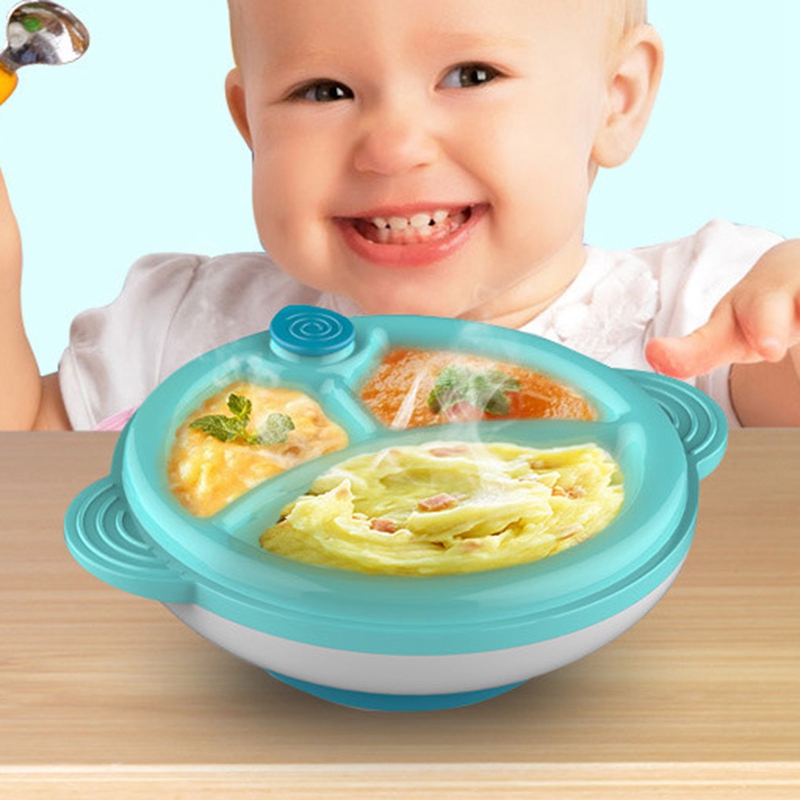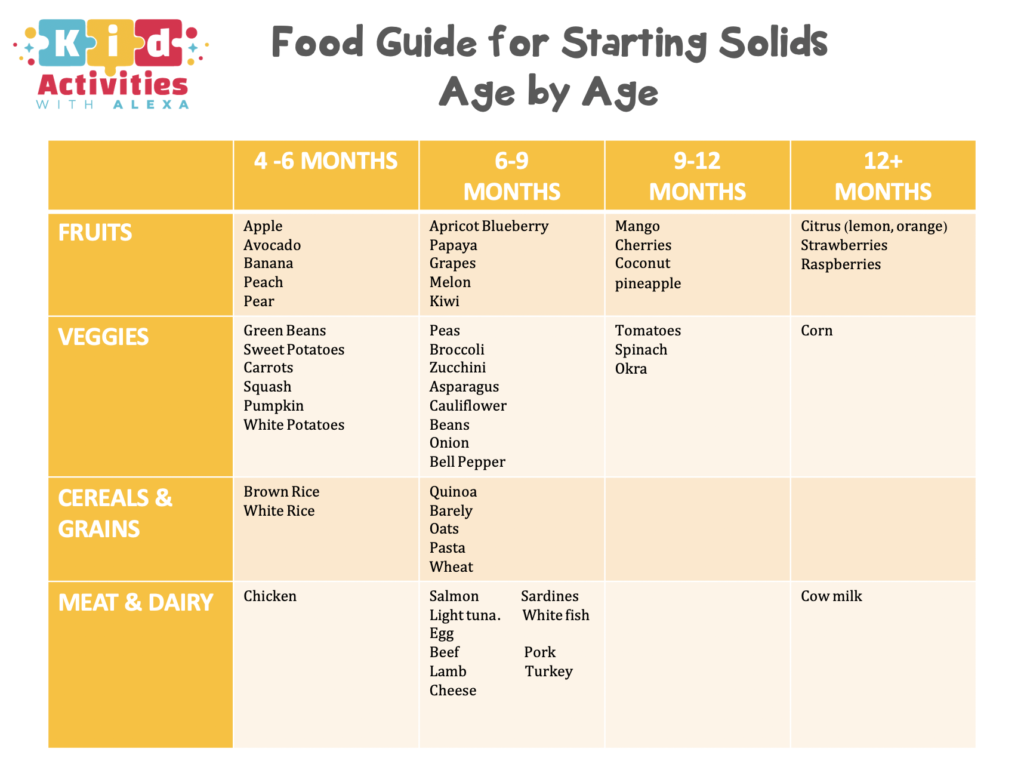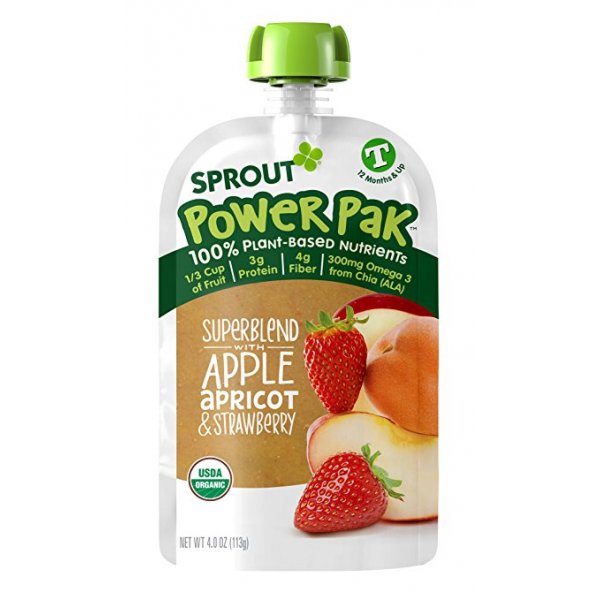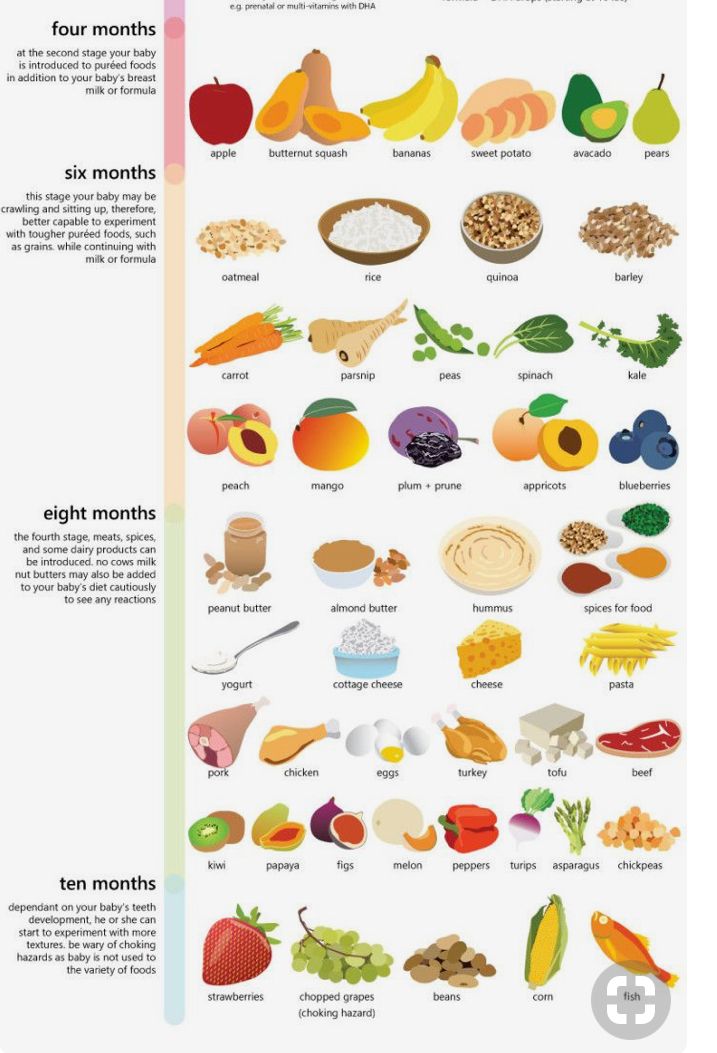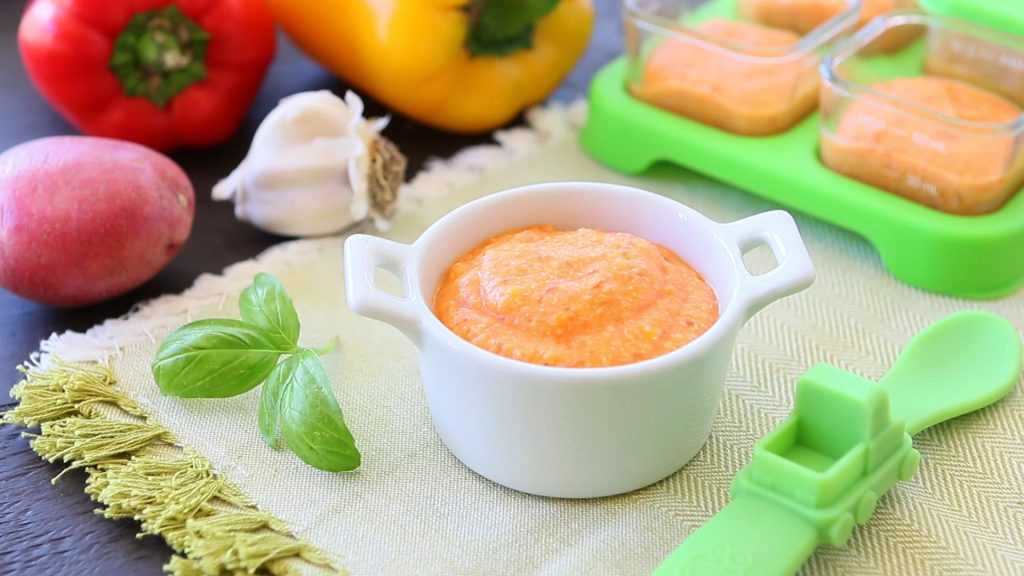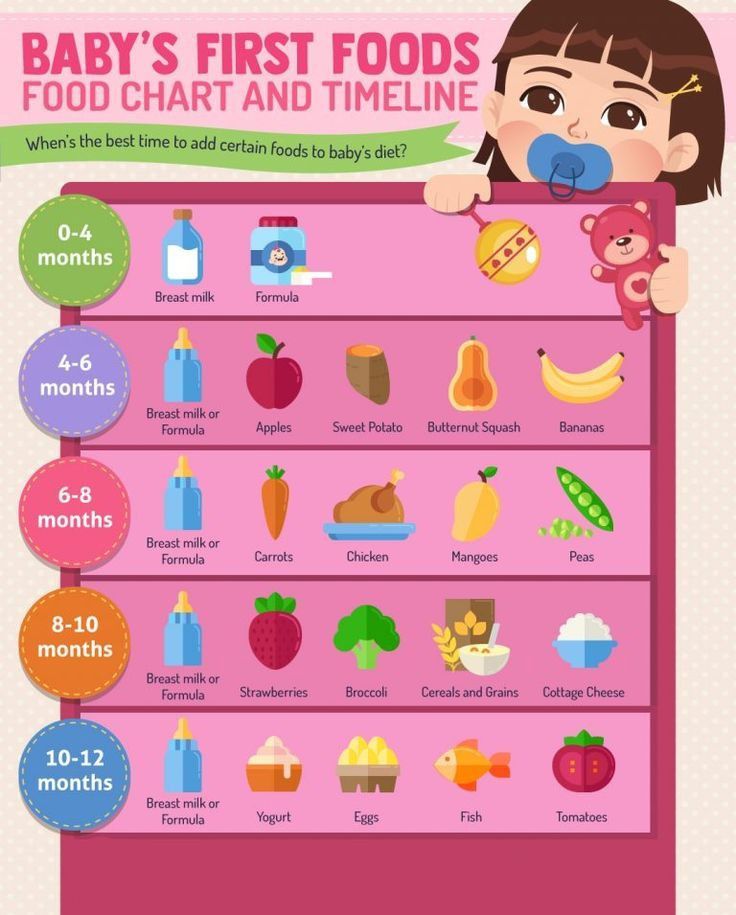Can you season baby food
Baby food flavors: Using spices and seasoning in baby food
Baby food doesn't have to be bland – in fact, spices and seasonings are encouraged. The more variety, the better, to expand your baby's tastes. You don't have to make separate food for your baby – little ones can eat what the rest of the family is eating, as long it doesn't contain added sugars.
Many babies are ready for solid foods by the time they're around 6 months old, and parents often turn to such traditional first foods as infant cereals and other bland fare. Plain food isn't necessarily bad for babies, but too much of it can deprive them of important nutrients and may make them less likely to accept different textures and flavors. According to the American Academy of Pediatrics, it's important to offer your baby a variety of healthy foods.
So how do you get your baby to eat a variety of food from an early age? Here's the latest thinking on how to raise an adventurous eater.
Use spices for baby food
While babies throughout the world are dining on complex, flavorful cuisine, many babies in the United States are gumming plain, tasteless mush. The reasons we continue to serve babies bland food are open to debate, but one thing is certain – they're not based on research. In other words, a culinary walk on the wild side won't hurt your baby in the slightest.
And breastfed babies have actually walked that way already: Breast milk takes on the flavors of the food the mother eats. So if you dine at your favorite Indian restaurant and then nurse, your baby will also enjoy the taste of an Indian meal.
So toss some rosemary in with that squash, liven up that chicken with a dash of cumin, and give those mashed potatoes a kick with a blend of paprika and parsley. You may be surprised by your baby's reaction.
Contrary to popular belief, you don't need to banish hot spices from the highchair tray either. Of course you'll want to steer clear of anything that could irritate your baby's skin or mouth (so no habaneros yet), but there's no harm in letting your baby try mildly or moderately spicy food. For example, milder chiles, such as Anaheims and poblanos, add flavor without causing pain. If anyone raises an eyebrow, just say that babies in other parts of the world thrive on spicy food.
If anyone raises an eyebrow, just say that babies in other parts of the world thrive on spicy food.
Cooking with herbs and spices is a great way to expand your baby's palate, but skip the sugar (see next tip) and salt when preparing food for your little one. Not only are they unhealthy, but they can also lead to poor eating habits and health problems, such as obesity, diabetes, and heart disease in childhood and later in life.
Avoid added sugars
Sugars that exist naturally in foods, such as the fructose in an apple or the lactose in cheese, are fine. But watch out for added sugars. These are sugars or syrups added to foods or beverages when they are processed or prepared. These are products like corn syrup, dextrose, maltose, and sucrose.
The U.S. Department of Agriculture and the Department of Health and Human Services recommend that children younger than 24 months not consume any added sugars.
You likely won't have problems with jarred baby food or whole-food purees you make at home. But as your little one moves on to finger foods, snacking, and eating what the family eats, be mindful that added sugars can be found in surprising places, such as in ketchup and soups.
But as your little one moves on to finger foods, snacking, and eating what the family eats, be mindful that added sugars can be found in surprising places, such as in ketchup and soups.
Limit junk food
Everyone knows that junk food is unhealthy, but the negative effects can be much more serious for babies. (Unfortunately, some classic kid foods actually qualify as junk. See our list of the worst foods for babies.)
That's because even a very small serving of sugary or salty junk food is likely to make your baby feel full, leaving less room for healthier food with the nutrients necessary for brain growth and development.
Does this mean you're a bad parent if you let your little one sample a french fry or gnaw on a corner of your chocolate chip cookie once in a while? No – just don't make it a regular habit because it could encourage your baby to develop a taste for extra sugary or salty foods.
Give your little one homemade food for babies
and for grown-ups"Homemade baby food" sounds daunting, but it's surprisingly easy and doesn't require a nutrition degree, gourmet cooking skills, or fancy equipment. Making baby food can be as simple as mashing up a banana or avocado with a fork, squashing canned beans together with some garlic, or pureeing veggies steamed with spices.
Making baby food can be as simple as mashing up a banana or avocado with a fork, squashing canned beans together with some garlic, or pureeing veggies steamed with spices.
And as long as you're making something healthy, your baby can eat the same food you do – no need to make separate meals! Just use a blender, food processor, or baby food maker to make food the right consistency for your baby.
Or forget the purees altogether and try baby-led weaning: Place large, soft chunks of food on the table or highchair tray and let your baby feed themself.
"There's a lot of confusion when it comes to organics because there's no conclusive evidence that they're healthier than conventional foods," says dietitian and mom Jodi Greebel of New York. And there's conflicting evidence about whether pesticides and hormones in conventional foods are harmful.
"But the general feeling is that anything harmful will have a stronger effect on babies because of their small size – bad substances won't be as diluted as they are in an adult. "
"
Some studies suggest a link between pesticide exposure and cancer as well as developmental problems in children, including attention deficit hyperactivity disorder and poor intellectual development. But the short-term and long-term effects of pesticide exposure are still poorly understood, and experts disagree on just how concerned parents should be. In deciding whether to feed your baby all, some, or no organic food, consider what works for your family and your budget.
The organic factor also matters more with some foods than others. For example, apples, spinach, and strawberries have the highest pesticide residue levels. On the other hand, sweet corn, cabbage, and avocados tend to have relatively low levels. The nonprofit Environmental Working Group ranks fruits and vegetables from best to worst in terms of pesticide residue.
You can also buy organic meat and poultry when possible, but keep in mind that conventional meat and poultry can still be free of antibiotics and hormones. The federal government prohibits the use of hormones when raising hogs and poultry, so just check packages of beef for a label like "no hormones administered," and check meat and poultry products for labels indicating that no antibiotics were added. Visit the United States Department of Agriculture's website for more information about meat and poultry labeling terms.
The federal government prohibits the use of hormones when raising hogs and poultry, so just check packages of beef for a label like "no hormones administered," and check meat and poultry products for labels indicating that no antibiotics were added. Visit the United States Department of Agriculture's website for more information about meat and poultry labeling terms.
Whatever you decide, remember that general good nutrition trumps organics.
Expand your baby's tastes
Although consistency in everything from bedtime to discipline is a hallmark of sound parenting advice, a little inconsistency at mealtime can be a wonderful thing. Changing up the menu broadens your baby's palate and helps to ensure good nutrition, especially when it comes to produce. (For ideas to get you started, check out these experts' suggestions for adventurous first foods.)
Often this means heaving ourselves out of a well-worn food rut. Stuck on sweet potatoes? Shake things up with some steamed beets. Smashed peas and carrots every night? Consider pureed brussels sprouts with a little lemon juice instead. Oat cereal overload? Try quinoa cooked in vegetable broth.
Smashed peas and carrots every night? Consider pureed brussels sprouts with a little lemon juice instead. Oat cereal overload? Try quinoa cooked in vegetable broth.
Feed your baby the necessary fats
Grocery store shelves are bursting with low-fat and nonfat products – should babies be eating these? Absolutely not. Fat is essential for babies' growth, and both breast milk and formula contain a lot of it.
Experts recommend serving babies full-fat dairy products, such as cheese and yogurt, until age 2.
But don't give your baby cow's milk to drink until after their first birthday. At that point, serve whole milk (unless the doctor tells you otherwise).
The unsaturated fat in avocado makes it another wonderful choice for your baby, and the same goes for salmon and other fatty fish because they contain essential fatty acids, including omega-3s.
Offer rejected foods again – and again
When it comes to sampling new foods, babies make harsh critics. Offer a mouthful of your famous pureed green beans with dill, and your baby may swallow it reluctantly – or spit it out and push your hand away, mouth clamped shut.
Don't force the issue. For one thing, your baby may just not be hungry. Babies' appetites fluctuate, and they need less food than many of us think.
On the other hand, your baby might be turned off by the look, smell, or taste of a food. This doesn't mean you should ban it from your table permanently. If you keep trying, your baby may begin to tolerate that new food after you expose it to them a few times.
So although it can be frustrating to watch your baby reject the food you've lovingly prepared, take a deep breath and try again another day.
Demonstrate the joy of eating
"Dining with one's friends and beloved family is certainly one of life's primal and most innocent delights," Julia Child famously said.
Enjoying your food is the most meaningful thing you can do to foster a similar appreciation in your little one. Babies watch their parents and model them, so experiment with different flavors and new foods. Let your baby see you eating and savoring lots of different healthy foods.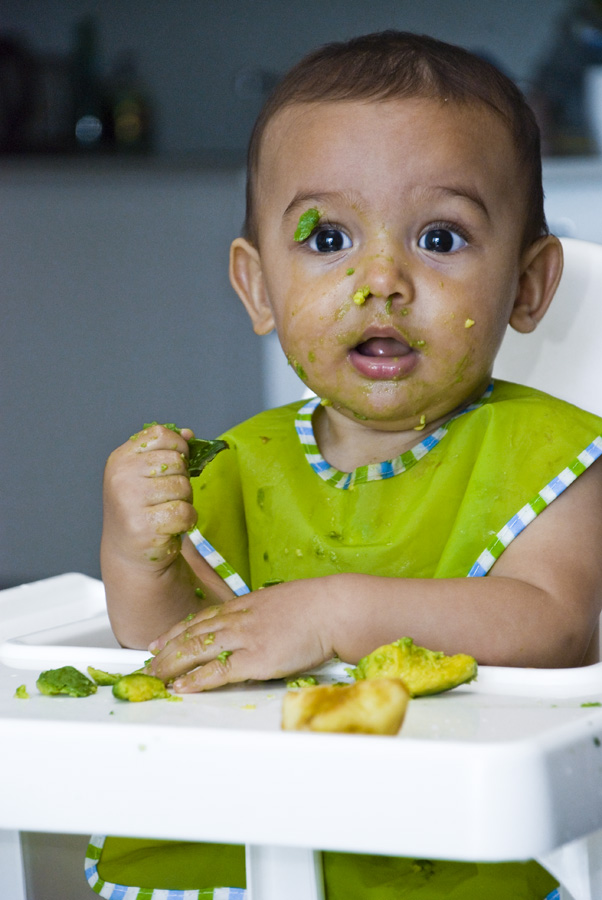 If you enjoy the simple pleasure of eating good food, chances are your baby will too.
If you enjoy the simple pleasure of eating good food, chances are your baby will too.
Unfortunately, it's also easy to become frustrated and stressed about your baby's eating habits. Their fickle appetite, your concern about whether they're eating enough, and the sheer messiness can conspire to turn feeding time into a chore – or even an outright battle.
It doesn't have to be this way. There are several things you can do to make mealtime an enjoyable experience. First, make sure you have enough time so that you aren't hurrying your baby's meals. And hard as it is, accept the mess as a given – letting babies play with their food is actually good for them. They're learning about new tastes and smells while they're playing, and they're learning that eating can be fun.
To make cleaning up easier, put a splat mat under your baby's highchair. On warm days, consider letting your baby dine topless to lighten your laundry load. And take comfort in knowing that everything is washable, including your baby.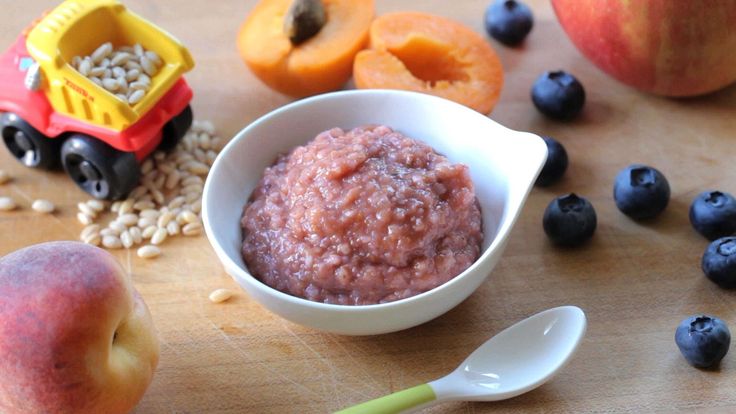
Adding Herbs and Spices to Baby Food – Mummy Cooks
Blog Menu
Posted by Siobhan Berry ·
Adding herbs and spices to homemade baby food is a wonderful way of developing your baby’s taste buds. They're perfectly safe so don’t shy away from incorporating yummy flavours they are sure to love! And most importantly, introducing variety from an earlier stage is key to raising a more adventurous and healthy eater.
Everything from cinnamon, turmeric and garlic can be given to your weaning baby and they not only enhance flavour, but they are also great for health.
Tips for adding herbs and spices
When adding herbs and spices, make sure to start simple and try not to add too much so as to overpower the food. Start out by adding one herb or spice to your baby’s puree and then building it up from there by mixing with other flavours.
Start out by adding one herb or spice to your baby’s puree and then building it up from there by mixing with other flavours.
You should avoid adding salt to your baby’s food or a family meal that your baby will be eating. Until about 12 months, your baby can only manage about 1g of salt each day; most of which they will get naturally from their food, breastmilk or formula. Enhance your baby’s food with herbs and spices instead. When preparing dishes that require stock cubes, make sure to opt for a low sodium version. Beware of pre-made herb or spice blends too as they are often high in salt and sugar.
What Herbs and Spices can I add to Baby's Food?
Your baby can enjoy a broad range of herbs and spices from cinnamon and nutmeg, right through to thyme, paprika and turmeric. So don’t be afraid to include baby in family meals! Check out some ways to spice up your baby’s meal below:
Turmeric: aids digestion and has great anti-inflammatory properties. Add it to Curries and Omelettes for a quick and easy way to boost flavour and nutrients. Try our Coconut Chicken Curry for a tasty family meal your weaning baby will love. It’s perfect to batch cook and store in Portion Pots so you can enjoy curry any night of the week!
Add it to Curries and Omelettes for a quick and easy way to boost flavour and nutrients. Try our Coconut Chicken Curry for a tasty family meal your weaning baby will love. It’s perfect to batch cook and store in Portion Pots so you can enjoy curry any night of the week!
Oregano: contains four times more antioxidants than blueberries and it is great for fighting off infections. Add some extra oregano to this Pasta Sauce with Hidden Veg for a healthy, flavour filled sauce your weaning baby will love. Batch cook and store in single servings in Portion Pots; it's great to have on hand on those busier nights.
Thyme: brimming with nutrients such as vitamins C and A, thyme is packed full of goodness and health benefits. This tasty herb can enhance anything from roast potatoes to soups and stews, while doing wonders for your immune system. Check out our tasty Chicken Noodle Soup recipe to boost your family’s intake.
Cinnamon: a great mood boosting spice, cinnamon is packed with antioxidants and can help fight bacterial infections.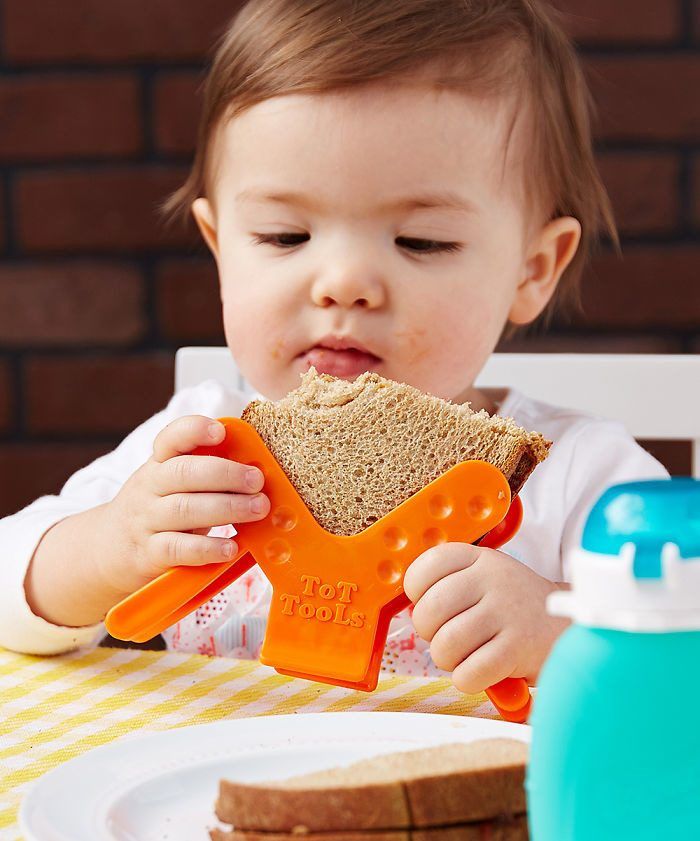 Add it to Quinoa Porridge or try our Cinnamon French Toast for a tasty, naturally sweet breakfast or snack the whole family can enjoy.
Add it to Quinoa Porridge or try our Cinnamon French Toast for a tasty, naturally sweet breakfast or snack the whole family can enjoy.
Mint – Mint is a great palate cleanser and soothes indigestion. Add it to purees like Courgette, Mint and Pea for a fresh and bright meal perfect for your baby.
Basil – With its sweet and fragrant aroma, basil adds great flavour to a variety of dishes. It’s one of the primary ingredients in pesto – so why not try our Homemade Basil Pesto recipe for a delicious finger food dip for your little one. It’s also perfect for adding flavour to purees!
Ginger – A popular spice that aids indigestion and fights infections, ginger can be used to brighten up your baby’s food. Use it in recipes like Peach Puree with Basil and Ginger and Plum and Ginger Yogurt.
Rosemary – This fragrant herb adds wonderful flavour to soups and stews. It’s also rich in antioxidants and helps protect the immune system. Add it to our Winter Warmer Stew and Salmon Pasta with Courgetti for a delicious meal perfect for both baby and family.
Add it to our Winter Warmer Stew and Salmon Pasta with Courgetti for a delicious meal perfect for both baby and family.
Making your own Spice Mix
When it comes to dishes such as curries and marinated dishes, it could not be easier to boost flavour and health benefits with herbs and spices. Make the most of your spice rack by making your own spice mix so you don’t depend on shop bought ones as they can often be high in salt. Make it yourself without the unnecessary extras and store in our 9-12 months pots.
Try mixing different spices to create a curry paste like in our Homemade Curry Paste or make this simple spice blend to season chicken like in our Chicken Fajitas :
1 heaped tbsp paprika
1 tbsp of ground coriander
A pinch of cumin
2 medium garlic cloves, chopped finely
Don’t be afraid to mix and match different flavours; remember that babies and toddlers can have spicy food too!
- Tag:
- All Advice and Recipes
Baby food up to 3 years
Marketplace knowledge base Rules of work and quality control Allowed to sell after gaining access to the category Baby food up to 3 years
Last updated October 28, 2022
Read 0 minutes
Restrictions for product categories
- Rules for selling products in the category
- How to access the category
- How to start selling products
- Regulations
Rules for the sale of goods in the category
- Food products for children under 3 (three) years old can be sold in the following categories:
- Baby food;
- Juice for children under 3;
- Milkshake for children up to 3 years;
- Water for children under 3;
- Kissel for children under 3;
- Cereal cocktail for children up to 3 years;
- Morse for children up to 3 years;
- Nectar for children under 3;
- Compote for children under 3;
- Milk for children under 3;
- Cookies for children under 3;
- Bar for children up to 3 years;
- Oil for children up to 3 years;
- Groceries for children under 3 years old.

- Access to the category can only be granted if the correct documents are present.
- Goods will be available for sale only after uploading and checking quality documents: state registration certificates (SGR).
In case of violation of the rules, we reserve the right to block the cards of goods with violations, restrict access to the category, and completely stop cooperation.
How to access category
- Create an application, select topic Quality control and subtopic Request access to category .
- Indicate in the application that you want to get access to the "Baby Food" category.
- Please attach to your application:
- one of the following documents:
- contract or extract from the contract with the manufacturer or right holder;
- official letter from the manufacturer or copyright holder.
- list of products you want to sell in the category.

- one of the following documents:
- Send a request.
We will check the submitted documents. If everything is in order with the documents, you will be asked to sign the DS (additional agreement). After that, you will get access to the category and can start adding products.
How to start selling products
To get your products listed on Ozon:
- Upload your products. Make sure that:
- all required characteristics are filled;
- the exact composition is indicated;
- photos meet the requirements;
- there are no errors.
- In your personal account, go to page Products and prices → Certificates and upload the State Registration Certificate (SGR). After gaining access to the category, be sure to link the products to their documents. How to do it.
After successful moderation and verification of uploaded documents, goods will be sold on Ozon.
Regulations
- Technical Regulations of the Customs Union TR TS 021/2011 “On Food Safety”
- Law of the Russian Federation “On Protection of Consumer Rights” of 07.
 02.1992 N 2300-1
02.1992 N 2300-1 - Decree of the Government of the Russian Federation of 32.12.20. 2463 “On approval of the Rules for the sale of goods under a retail sale and purchase agreement, a list of durable goods that are not subject to the consumer’s requirement to provide him with a product with the same basic consumer properties free of charge for the period of repair or replacement of such goods, and a list of non-food products of proper quality, not subject to exchange, as well as on amendments to certain acts of the Government of the Russian Federation”
How do you like the article?
Industrial baby food: can you trust?
Author of article Khavkin Anatoly Ilyich
2210 views
December 27, 2021
Login or register to save articles and products to your favorites
Dear moms and dads! A new tenant has recently settled in your house: restless and requiring special attention. He is demanding in everything, including food. After all, it depends on nutrition how it will grow and develop.
He is demanding in everything, including food. After all, it depends on nutrition how it will grow and develop.
What should be in a baby's diet
It is important to remember that, starting from 4-6 months of life, the child begins to need additional nutritional components that can only be obtained with the help of complementary foods. These are new products and dishes based on fruits, vegetables, cereals, cottage cheese, yolk, meat and vegetable-meat puree, fermented milk products, fish and vegetable-fish puree, and so on. Once again I want to emphasize that the intake of essential nutrients only with human milk or milk formula becomes insufficient by a certain age. In addition to vegetable proteins, minerals, trace elements and vitamins, the introduction of complementary foods contributes to the formation of the chewing apparatus, stimulation of intestinal motility.
By the 4th month of life, the baby's gastrointestinal tract becomes more mature: the increased permeability of the intestinal wall decreases, digestive enzymes mature, and local immunity is formed. By this time, the child acquires the ability to swallow semi-liquid and thicker food, associated with the extinction of the “spoon ejection reflex”.
By this time, the child acquires the ability to swallow semi-liquid and thicker food, associated with the extinction of the “spoon ejection reflex”.
When to introduce complementary foods?
Experts unanimously came to the conclusion that it is recommended to prescribe complementary foods for children who are exclusively breastfed from 6 months. In this case, the first type of complementary foods should be products with high energy density - cereals or vegetable purees of industrial production, enriched with micronutrients. Children with deviations in health status (hypotrophy, anemia, etc.), with malnutrition of nursing mothers, complementary foods are given at an earlier date. After the introduction of vegetable puree or porridge, cottage cheese into the diet, the yolk, meat and fish puree are sequentially introduced.
Homemade and ready?
In the nutrition of the baby, products prepared both at home and industrial products can be used.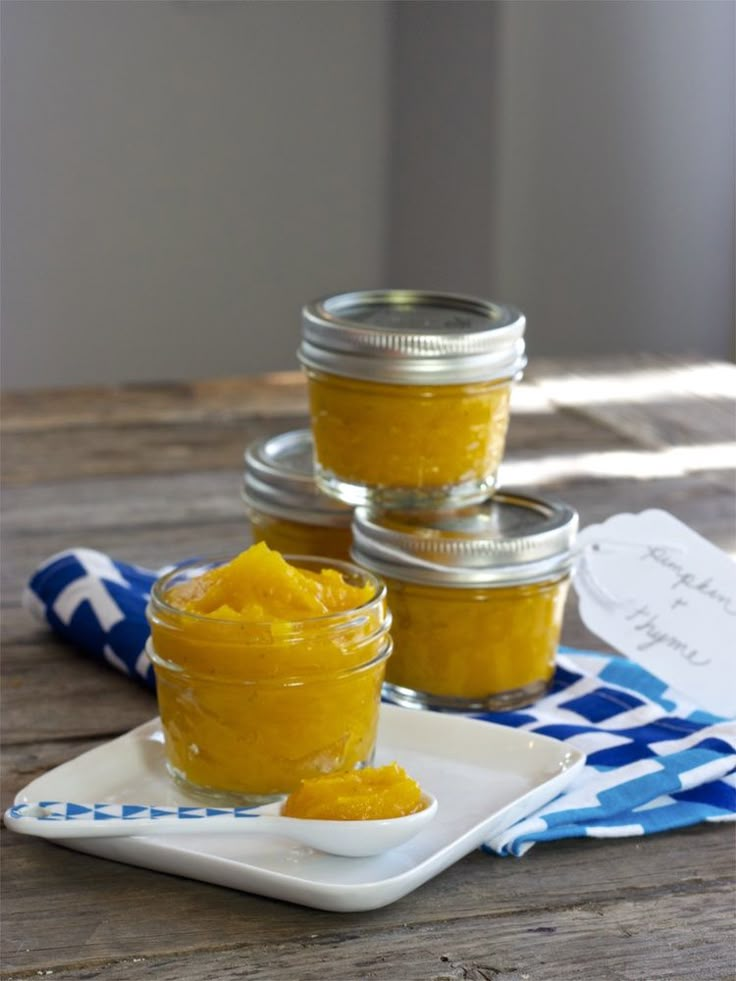 The latter have a number of undeniable advantages: they are prepared from raw materials that meet all the hygienic requirements in force in the Russian Federation for raw materials and the production of baby food, they have a guaranteed chemical composition, including vitamins, regardless of the season. And gradually, complementary foods are completely replaced by feeding with breast milk or its substitutes.
The latter have a number of undeniable advantages: they are prepared from raw materials that meet all the hygienic requirements in force in the Russian Federation for raw materials and the production of baby food, they have a guaranteed chemical composition, including vitamins, regardless of the season. And gradually, complementary foods are completely replaced by feeding with breast milk or its substitutes.
If there is a problem
Ready-made dairy-free cereals (buckwheat, rice) are the first to be introduced into the nutrition of a child with frequent stools, insufficient body weight (hypotrophy), food allergies. With excess body weight and constipation, preference is given to vegetable puree.
First food
Cereals
Porridge should start with gluten-free cereals (rice, buckwheat, and later corn and millet). They can be dairy or dairy-free. In the future, gluten-containing cereals (wheat, barley) and cereals from a mixture of cereals can be used.
Vegetable purees
Vegetable purees are given initially from one type of vegetable with delicate fiber (for example, zucchini), followed by expansion by introducing other vegetables (cauliflower and white cabbage, broccoli, carrots, pumpkins, potatoes, etc.), paying attention to their tolerance. It should be noted once again that industrial mashed potatoes guarantee its quality and safety.
Curd, egg yolk, meat and fish
Cottage cheese, egg yolk, meat and fish are valuable sources of animal protein, a number of minerals (iron, calcium, phosphorus, etc.) and vitamins A, E, B1, B2, B6, B12, which make it possible to most fully meet the high needs of children in the second half of the year life in these nutrients.
As already noted, at the age not earlier than 8 months, it is possible to introduce specialized fermented milk products baby food into the child's diet, such as yogurts and biolacts .
Complementary feeding rules
When introducing complementary foods, the following rules should be followed.